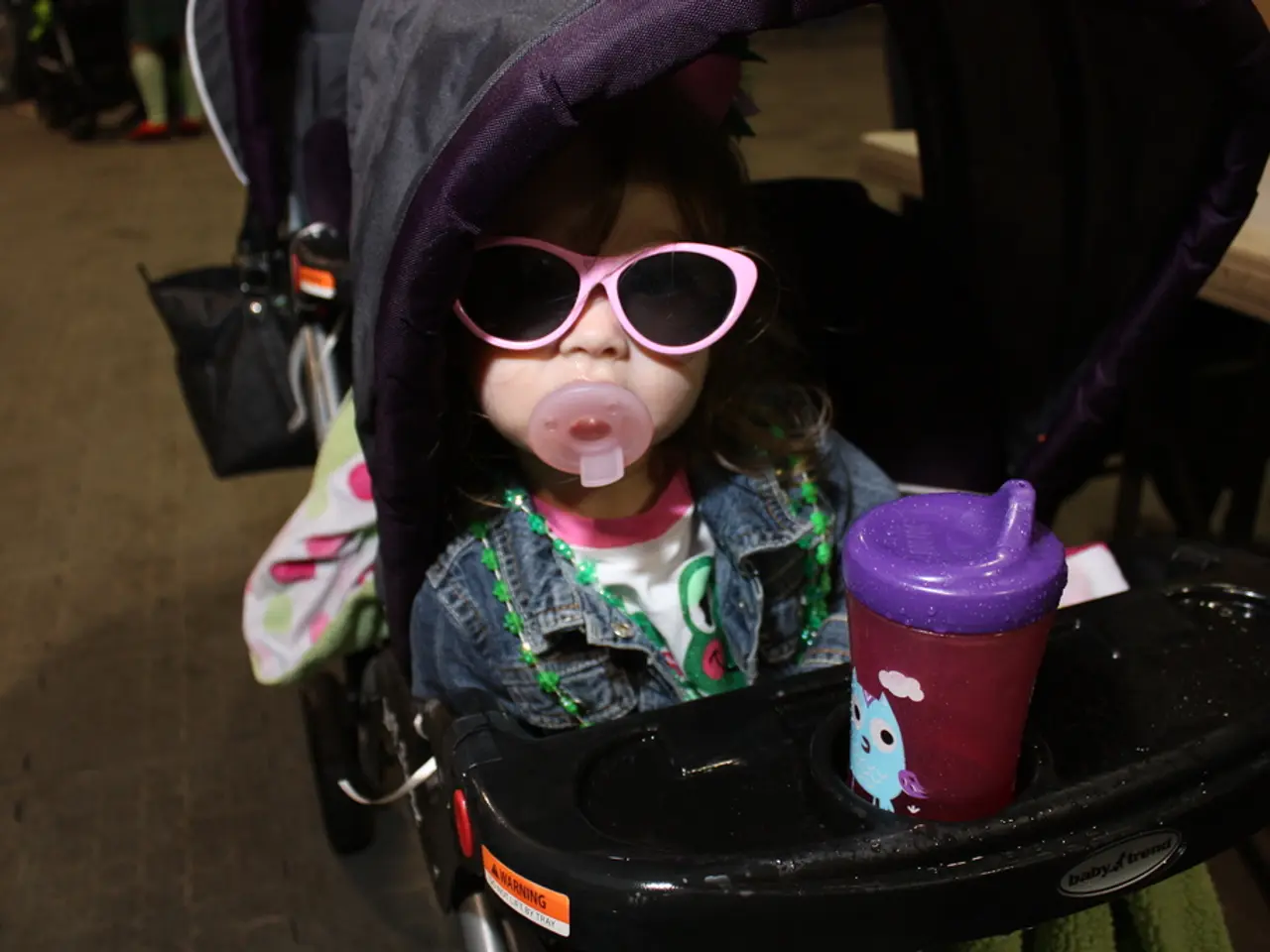Children's Sleep Disorders: Recognizing Symptoms, Diagnostics, and Therapies
In a world where children are often full of energy and seemingly endless enthusiasm, it can be challenging to identify the signs of a rare and complex condition like narcolepsy. This sleep disorder, characterised by excessive daytime sleepiness (EDS) and sudden, temporary loss of muscle control, affects a small percentage of children and adolescents.
Symptoms of narcolepsy in children can be subtle and may be mistaken for behavioural problems. Irritability, hyperactivity, poor attention, and unusual facial expressions are common indicators. More notably, EDS often presents as restlessness or irritability rather than obvious sleepiness. Hypersomnia, or longer than usual sleep times and a return to daytime napping typical of infants and toddlers, is also a telltale sign.
One of the most distinctive symptoms of narcolepsy is cataplexy, a condition that causes sudden muscle weakness or loss of muscle control. In children, cataplexy may appear subtly as facial weakness or tics. Other symptoms include vivid dreams, sleep disruptions, and increased body movements during sleep.
Diagnosing narcolepsy in children can be complex due to the subtlety of symptoms. Doctors typically conduct a detailed medical history, perform a physical examination, order blood tests, and carry out overnight polysomnogram (PSG) and multiple sleep latency tests. Testing for low levels of the brain chemical orexin (hypocretin) in the cerebrospinal fluid can aid diagnosis, especially for type 1 narcolepsy.
Treatment for narcolepsy in children is a combination of medication and behavioral interventions. Stimulants like modafinil can help maintain wakefulness, while antidepressants such as atomoxetine or clomipramine may help with cataplexy, hallucinations, and sleep paralysis. Sodium oxybate is approved for treating narcolepsy in children aged 7 and older and can help reduce cataplexy.
Lifestyle management plays a crucial role in managing narcolepsy. This includes scheduling naps, maintaining regular sleep schedules, getting regular exercise, and avoiding caffeine and heavy meals before bed. Behavioral interventions and education for families and schools are also essential for support.
Early recognition of narcolepsy is important to reduce its impact on a child's quality of life. Parents should alert teachers about a child's narcolepsy to prevent misinterpretation of the child's behaviour. Caregivers can work with the child to help them focus during activities when falling asleep would be especially dangerous. The school can help by scheduling naps, allowing extra time during tests, and providing materials if the child misses class.
Encouraging the child to share their experiences of hallucinations and reminding them that they are not real can help reduce fear. Talking therapies and online support groups can also help reduce symptoms of anxiety and depression in children with narcolepsy.
In conclusion, while narcolepsy can present challenges, early recognition and appropriate management can significantly improve a child's quality of life. Recognising the symptoms, seeking professional help, and providing support are key to navigating this condition.
- Despite the evident energy in most children, the presence of narcolepsy, a rare and complex sleep disorder, might go undetected.
- This condition, marked by excessive daytime sleepiness (EDS) and temporary muscle loss, affects a small number of children and adolescents.
- Symptoms in children can be misinterpreted as behavioral problems, such as irritability, hyperactivity, and poor attention.
- EDS often appears as restlessness or irritability, rather than obvious sleepiness, making it difficult to identify.
- Hypersomnia, characterized by longer than usual sleep times and a return to daytime napping common in infants, is another telltale sign.
- One of the most distinct symptoms of narcolepsy is cataplexy, causing sudden muscle weakness or loss of control, which may present as facial weakness or tics in children.
- Other symptoms include vivid dreams, sleep disruptions, increased body movements during sleep, and sleep paralysis.
- Diagnosing narcolepsy in children can be complex, requiring a detailed medical history, physical examination, various tests, and testing for low levels of the brain chemical orexin.
- Treatment involves a combination of medication, such as modafinil, antidepressants like atomoxetine or clomipramine, and sodium oxybate for children aged 7 and older.
- Lifestyle management is essential for managing narcolepsy, including scheduling naps, maintaining regular sleep schedules, regular exercise, and avoiding caffeine and heavy meals before bed.
- Behavioral interventions, education for families and schools, and support are crucial in managing narcolepsy effectively.
- Early recognition of narcolepsy can help reduce its impact on a child's quality of life, with parents, teachers, and caregivers working together to support the child and minimize the condition's effects.
- In addition to professional help, talking therapies, online support groups, and addressing anxiety and depression can help children cope with their condition.




